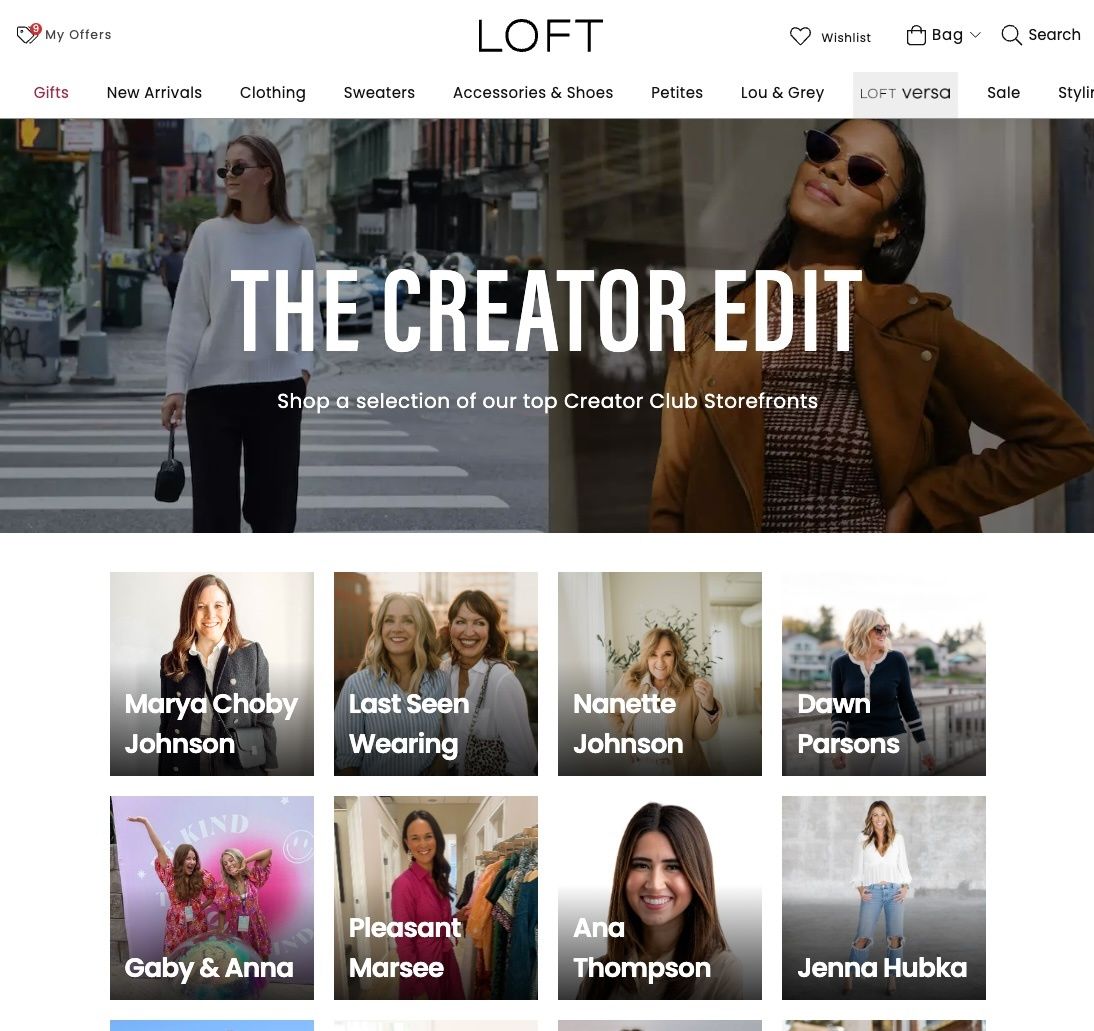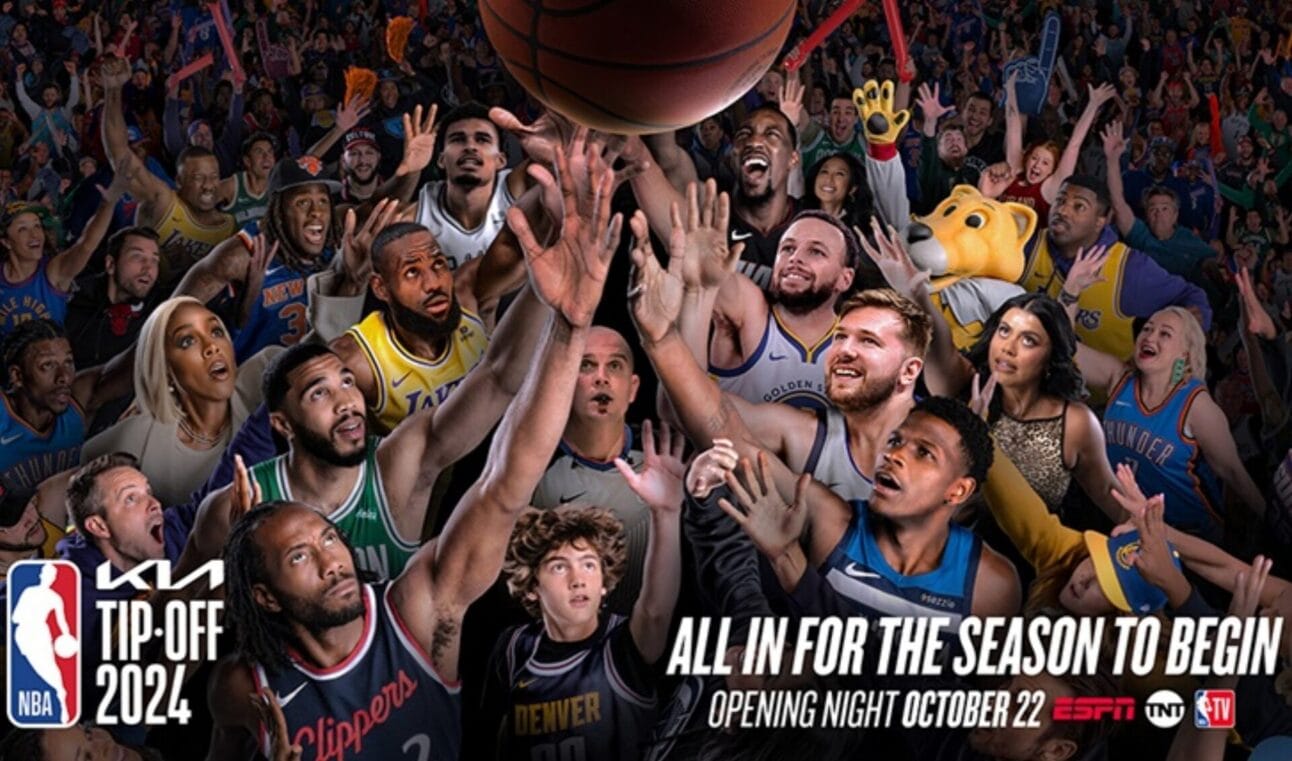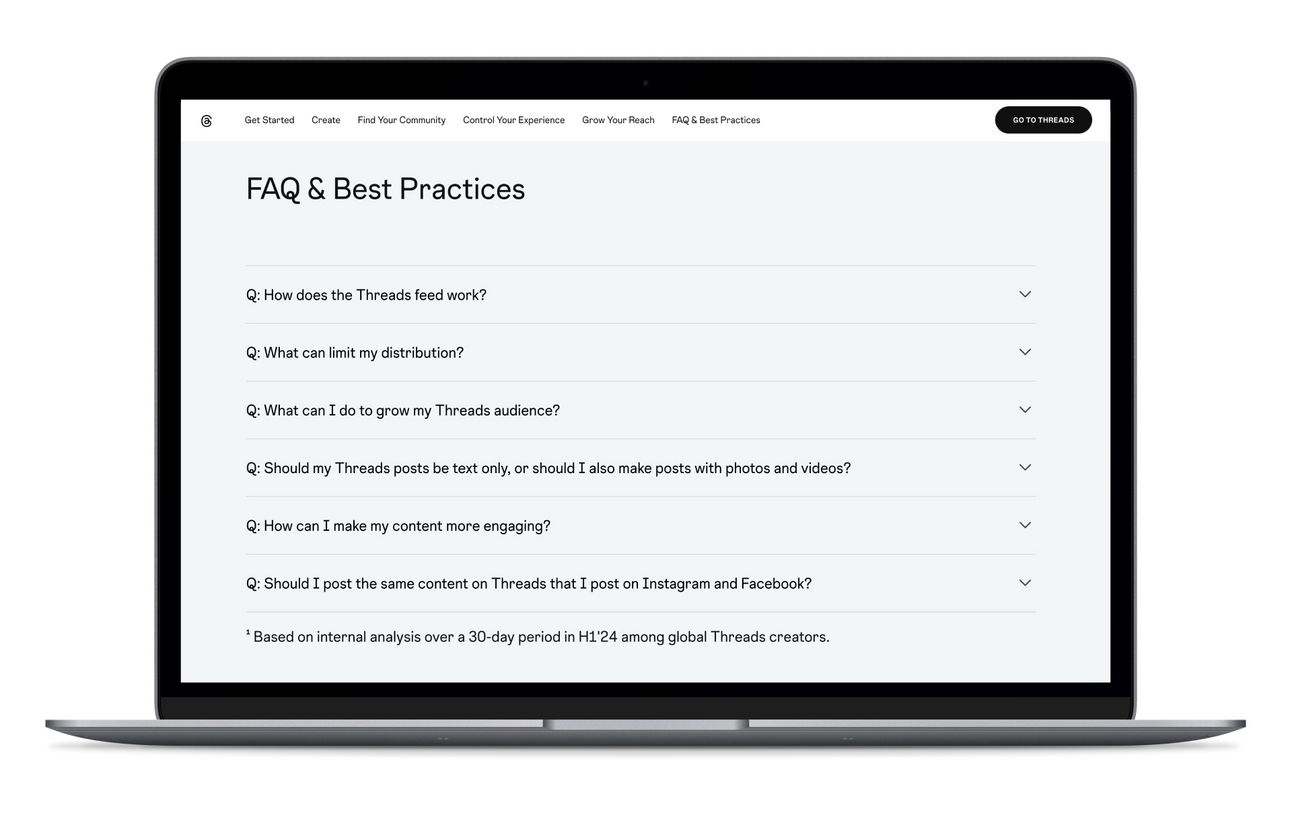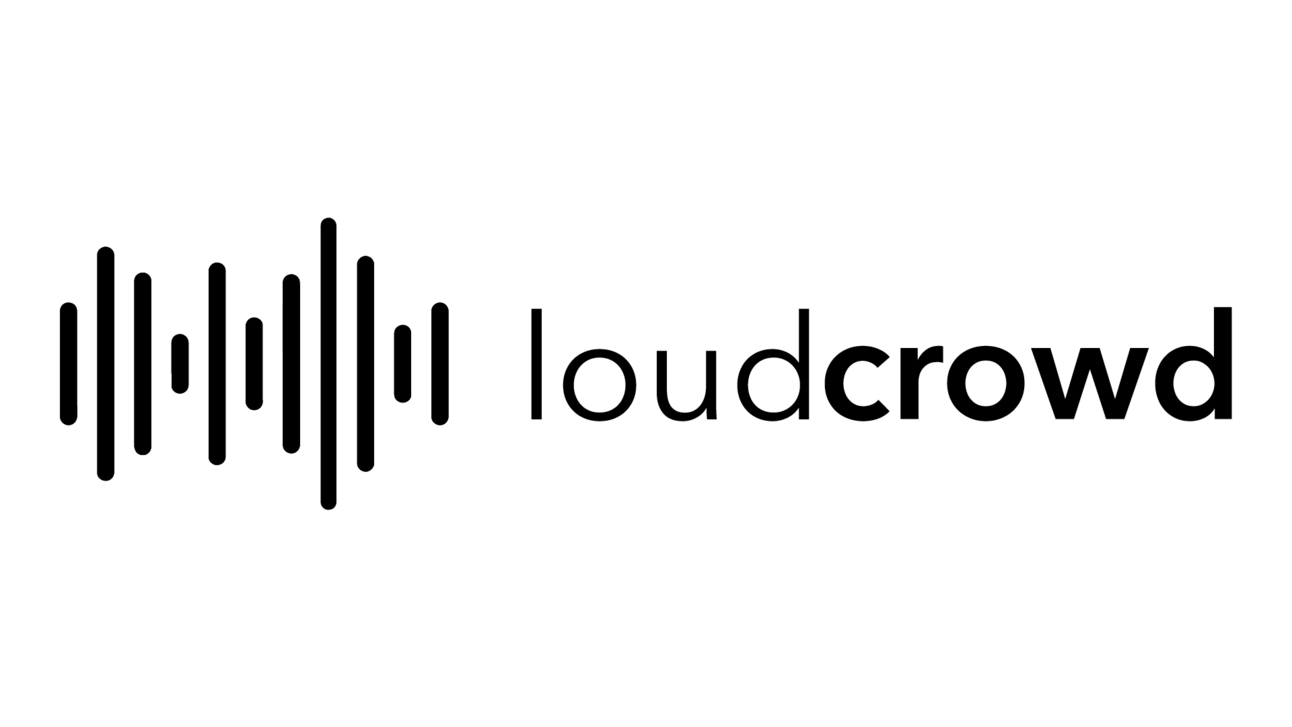IN PARTNERSHIP WITH
Heads up — I’ll be experimenting with the newsletter throughout the end of the year, including an additional send per week, new formats, and eventually a revamped design. If you have any feedback—good or bad—feel free to share at any time!
TODAY’S EDITION
The rise of Creator Storefronts and the benefits of “shop by influencer” for creators and brands
The NBA ramps up its creator initiatives for the new season
Meta launches its first educational resources for Threads
If you’re enjoying the newsletter and finding it valuable and want to support it, you can via Buy Me A Coffee.
NEWS, TRENDS & INSIGHTS
The Rise of Creator Storefronts: From Shop by Product to Shop by Influencer

LoudCrowd / LOFT
When you visit a brand’s eCommerce website, you typically shop by product categories. However, this can often overwhelm consumers, making it difficult to find personalized recommendations that resonate with their interests. Thankfully, that’s changing.
Enter Creator Storefronts—curated shopping experiences crafted by creators that address these pain points head-on by providing the opportunity to “shop by influencer.”
What Are Creator Storefronts?
Creator Storefronts, hosted on a brand’s eCommerce page, feature the creator’s bio, social links, relevant content, and—most importantly—curated product recommendations grouped by themes or collections.
Retailers Lead the Way
Retailers have been among the early adopters of this trend. Amazon is well-known for its Creator Storefronts via its Influencer Program, which it launched in 2018. Major retailers like Walmart and Target have followed suit, adding these experiences as part of their creator initiatives.
It’s not just retail giants getting involved—other industries, like travel, have also embraced Creator Storefronts. For example, Expedia’s Travel Shops allow consumers to browse itineraries curated by creators, earning them commissions when bookings are made through their recommendations.
The Shift in Consumer Trust
Consumers are increasingly turning to creators for inspiration and recommendations rather than companies themselves. Faced with endless choices, shoppers crave curated, personalized experiences. Creator Storefronts deliver exactly that—tailored selections from trusted creators that match consumers' individual tastes.
Brands are also focused on driving measurable results from creator partnerships, looking beyond engagement metrics to drive conversions and direct sales. This is where Creator Storefronts shine.
Benefits for Brands
Creator Storefronts allow brands to deepen partnerships with creators beyond traditional sponsored content, especially with long-term collaborators.
By embedding creators’ recommendations into eCommerce experiences, brands can capitalize on this trust and increase conversion rates. In fact, Creator Storefronts can double conversion rates, increase average order value by up to 60%, and reduce customer acquisition costs by 50%.
Brands integrating Creator Storefronts into their eCommerce platforms can also track the entire consumer journey—from the initial engagement with a creator to the purchase—unlocking true ROI insights.
Benefits for Creators
For creators, having a storefront on a brand’s eCommerce site boosts credibility and offers the potential to grow their followers through brand website traffic.
Creator Storefronts provide creators with new revenue streams through commissions on purchases driven by their recommendations.
Unlike traditional affiliate programs, which require juggling multiple links and relying on followers to find and use them, storefronts centralize everything in one place. Creators can direct their followers to a single link, ensuring proper attribution, simplifying the shopping experience, and driving more revenue—increasing affiliate retention too.
Implementing Creator Storefronts
Last year, I pitched the idea of Creator Storefronts to several enterprise consumer brands for the holiday shopping season.
While many expressed excitement, they hesitated to take action due to concerns about overwhelming their IT teams or lacking the time to implement something from scratch. At that time, I didn’t have a third-party solution to recommend, but now I do: LoudCrowd.
LoudCrowd, which powers Creator Storefronts for brands like Loft, boohoo, Huel, ColourPop, PrettyLittleThing, and Melinda Maria, enables brands to launch Creator Storefronts quickly—anywhere from a few days to a couple of weeks, depending on their eCommerce setup—just in time for peak shopping seasons.
A fast onboarding process isn’t the only benefit, though. Others include:
Native Experience: Storefronts are hosted on the brand’s domain rather than an off-domain or subdomain (e.g., TikTok Shop), providing a native experience.
Simple Setup: Brands can easily invite existing and new creator partners to build their storefronts via a direct link.
Empowered Creators: Creators can manage their own storefronts and track performance, reducing the workload for brand marketers and adding transparency.
Easy Integration: The platform works with existing affiliate and influencer marketing solutions through integrations and customized workflows.
Advanced Analytics: Access in-depth metrics on performance, including Earned Media Value (EMV), referred revenue, and order data.
Learn more about the power of Creator Storefronts and LoudCrowd, here.
The NBA Ramps Up Creator Initiatives for the 2024-25 Season

NBA
The NBA is ramping up its creator initiatives for the 2024-25 season, with Twitch streamer Kai Cenat and TikTok star Drew Afualo headlining the program.
Here are some of the key updates:
Expanded NBA Creator Cup Series: Building on the success of last year’s inaugural Creator Cup, which featured creators competing against each other, the NBA is expanding the series to include more games at marquee events like the Emirates NBA Cup, NBA All-Star Weekend, and NBA Summer League.
Content Sharing Network: In partnership with WSC Sports, select creators will gain access to over 25,000 hours of NBA game footage. Paired with AI tools to find and edit footage, they’ll be able to use it to create reaction and long-form videos.
NBA Creator Correspondent Program: After generating over 650 million video views last year, this initiative returns with over 200 creators providing real-time, exclusive court side and behind-the-scenes coverage at major NBA events.
Reshaping the NBA Experience
The NBA is integrating creators across various touch points from TV appearances and exclusive event access to archival footage. Creators are even allowed to take the court during marquee events. This access will enable them to craft unique stories that resonate with younger, digital-first audiences, making the game more accessible as well.
Existing NBA fans can engage with basketball in new ways, while creator-led narratives have the potential to attract new, more casual fans.
Sports Organizations Double Down on Creator Collaborations
The NBA isn’t alone in stepping up its creator partnerships. Other organizations are also expanding their initiatives:
NFL: Following a significant investment last year with YouTube's support, the NFL has increased its collaborations with creators across more social platforms and streaming services.
PGA: The PGA held its first-ever The Creator Classic in August, featuring 16 golf creators competing against each other.
ESPN: Earlier this year, ESPN launched the second phase of its Creator Network, focusing on amplifying female voices and highlighting sports beyond its core programming.
Meta Introduces Educational Resources for Threads

Threads / Best Practices
Meta has introduced a new hub featuring educational resources for Threads, which include best practices, data-backed tips, and content examples for creators.
Here are some key insights:
Post Frequency: A higher posting frequency is linked to more impressions per post. It’s recommended to post 2-5 times per week for audience growth, with weekend posts leading to higher engagement.
Media: Video, photo, and carousel posts that incorporate text significantly outperform those without text.
Replies: Replies account for nearly half of the views on Threads, with popular topics including TV & Movies, Photography, Fitness & Workouts, Sports, and Technology.
Top Performers: The best-performing creators post original content specifically tailored for Threads.
A Roadmap for Success
By offering data-backed insights and actionable examples, these resources create a roadmap for creators to grow their presence on Threads. While many best practices—such as mixing media and engaging in replies—are common sense, having them come directly from the platform adds value. For creators transitioning from Instagram to a short-form text focus, these guidelines can help ease the shift and ensure success.
Creator Success Could Unlock New Growth
This initiative complements other resources Meta has recently developed for creators, such as the Best Practices hub for Instagram. These efforts are significant not only for assisting creators in succeeding on the platform but also for unlocking the next stage of growth—particularly for Threads.
While Meta has been incentivizing creators to post, this approach isn't sustainable long-term. However, if Meta can help creators find value in Threads outside of direct payments, it could spark vital word-of-mouth growth and encourage even more creators to join.
FROM THE BLOG
In addition to my social media and newsletter, I also share content on my blog. Here are some recent posts that aren’t covered here — click the links for the full write up:
YouTube has added Poll Stickers for Shorts, allowing creators to engage viewers in new ways. Previously, polls could only be conducted using Community Posts or by asking viewers to vote manually in the comments. Shorts continue to receive new features that mirror other short-form video experiences like TikTok and Instagram Reels.
Spotify rolled out new settings and controls to help podcaster creators manage comments on their podcasts more effectively. Since launching in July, over 2.5 million comments have been submitted, giving creators greater control over the comment section experience.
TikTok expanded its STEM feed to all users in the U.S., U.K., and Ireland, which was previously only available to users under 18. This expansion makes it easier for viewers of all ages to find educational content, benefiting both creators and brands that produce it.
Forbes and Walmart are teaming up for the first-ever Creator Upfronts next week (October 28–29). Some of the biggest creators will take the stage to pitch brands, similar to TV Upfronts, where television networks and streaming services showcase their upcoming programming to secure advertising commitments in advance. This highlights a larger theme at play with creators and legacy media.
WHAT I’M READING
Instagram is back for its third year of the Creators of Tomorrow initiative, highlighting emerging talents across categories like The Creator’s Inspo, AI Accelerators, and DM-Worthy Icons. These categories and creators reflect some of Instagram's main focuses, such as building stronger editing tools, integrating more AI features, and amplifying shareable content.
LinkedIn’s Sr. Director of Product Management, Rishi Jobanputra, unpacks the key factors influencing the LinkedIn feed. He also explains the difference between "Connected and Unconnected Content, providing insights into why users see
Saturday Night Live parodied well-known influencers like Keith Lee and Alex Cooper in a sketch that humorously critiques influencer culture. This is yet another example of how some of the biggest digital creators have become household names.
THANK YOU
Thank you for reading! If you've enjoyed this, please consider sharing it with a colleague or friend. If you have any feedback, ideas, tips, or questions or would like to advertise in the newsletter or collaborate, please don't hesitate to reply to this email, reach out here, or send me a DM.


